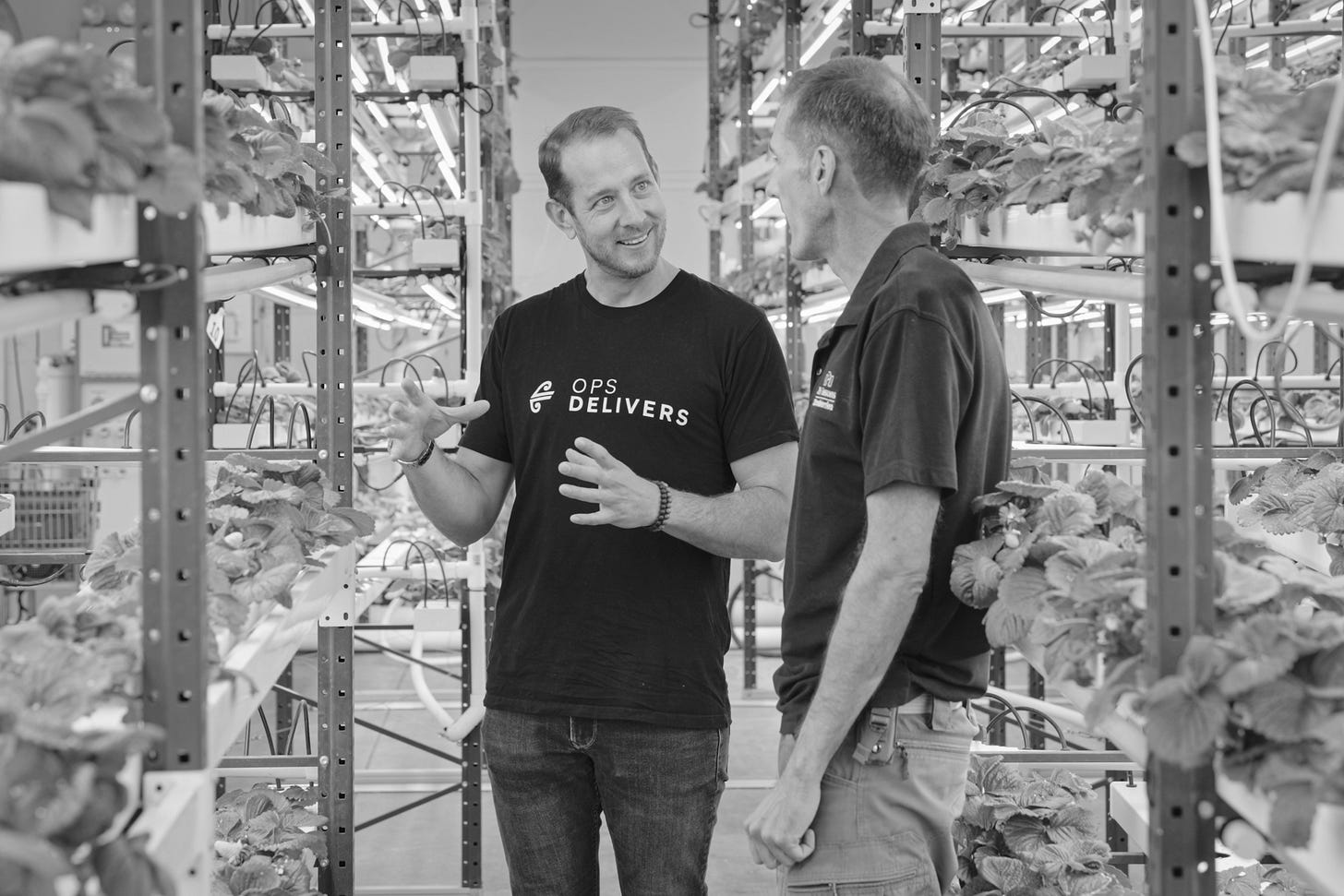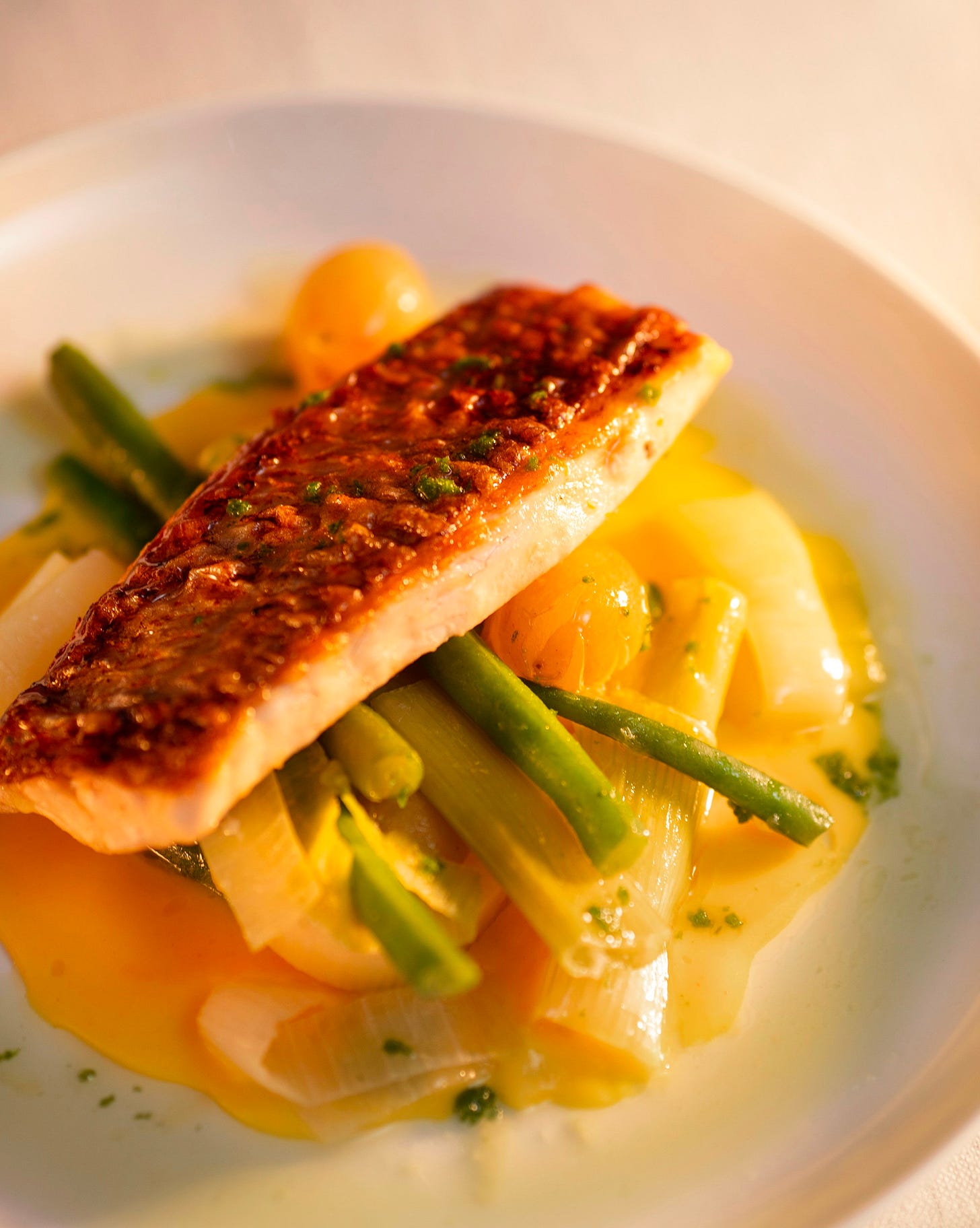Justin Koen thinks about how your food tastes at cruising altitude
A conversation with Air New Zealand's Head of Culinary.
If you enjoyed this issue, head to the bottom to like or comment so others can find it. Thank you!
Justin Koen is the Head of Culinary for Air New Zealand. His team develops inflight menus, tests them with catering partners, delivers exceptional dining experiences, and more recently, has been working on incorporating indigenous ingredients across cabins. We chatted about how meals get from concept to service in the air, how they refine flavors, and how they’re building more Māori ingredients into the menus.
Brianna Plaza: How did you get into this role?
Justin Koen: I’m originally from Zimbabwe, and I left when I was 19. I studied hotel management, but after a spin in kitchens, I fell in love with the food part. I pivoted toward being a chef and travelled the world for a number of years. I initially went to Australia, then to Europe and the UK for a few years, then New Zealand and Bermuda. I realized I loved New Zealand, so I went back and I’ve been here for 16 years.
Many years ago, I was working for a really large tourism company serving a high volume of customers in these really remote areas, and the logistics are similar to an airline. I’d had some really incredible experiences with Air New Zealand, so when I saw an open job I applied. Two weeks later, I started the role, and I’ve been here two years. I had no airline experience and walking in, I was fairly confident that I knew about food. But actually getting food on aircrafts is incredibly complex. I’m still learning a lot every day.
Brianna Plaza: How does the food get from the ground to service?
Justin Koen: That’s a good question because I think a lot of times, customers don’t even think about how the food gets there. Generally in a restaurant environment, you might write a menu a day, week, or month out. But airlines take around 12 months to get to the end of the process.
It starts with customer research. I have about 12,000 customer surveys sent to me each month, so that’s a big data set for us to work from. We’ve got a passionate group of consumers that really want us to succeed, so it’s quite a lot of pressure. We scan through all of that feedback, look at industry trends, and we see how we can fold it all in.
Once we’ve honed down those concepts, the small team of chefs who work for me come up with their blue sky thinking. We then take these ideas and test them with real customers. We go to a test kitchen, invite guests, and have focus groups. We really draw out from customers to understand how this would work for them in-flight.
From there, we go to our catering partners. You probably didn’t know that most airlines don’t have their own kitchens. Most used to, but many (including Air New Zealand) got out of them about 20 years ago. So anywhere we fly, we require catering partners. We have catering kitchens all over the world, as well as out of our home base in Auckland. We deliver these concepts right to the caterers and really work with them to see how we can scale it. It goes from, “This works for 10 customers,” to “We need to produce thousands of these a day.” How do we do that at scale, ensuring consistency and quality? That’s our biggest challenge.
Then our chefs, and myself sometimes, head out to wherever we fly and do a big menu presentation to our catering partners. Then they take them and serve them back to us in a big tasting. It can be up to a hundred or so dishes at a time because you’re focusing on multiple menu cycles, multiple cabins, and special meal needs. We invite some of our local commercial teams because they understand their customers and unique needs.
Then from there, it probably takes about three months for those ideas to actually go live within the Airline. We produce roughly 7 million meals a year in New Zealand, but every catering partner is different. In Taipei, our caterer is producing around 70,000, 80,000 meals a day. Home base is around 25,000 daily meals.
Once those ideas come to life and the menu goes live, we focus more on consistency and quality as a QA function. We do spot checks before a flight gets loaded up. We look at our data, again do a tasting presentation. Is this how it should look? Is this how it should taste? Is the seasoning right? Getting the seasoning right in flight is crucial.
Brianna Plaza: How do you refine flavors considering you can’t go on every flight and tweak meals?
Justin Koen: I think it’s been quite publicized how much your palate changes in flight, so we really have to nail that seasoning element. Generally, in your natural environment, humidity ranges from anywhere from 50 - 80, 90%. That’s a lot of humidity that you are used to eating with. When you are in flight, especially in an older aircraft, you can have as little as 12% humidity. When you think about dehydration and something like a dry mouth, you can’t taste anything anymore. You could throw lots of salt in it, but you don’t want to further dehydrate your passengers.
What we do is focus on umami. We look for really rich flavors to incorporate into the menus. Shellfish has got really strong umami, Parmesan cheese, tomatoes, all of these things have got that strong, savory flavor. So we try to incorporate that as much as possible to ensure that we still have that flavor without loading salt into it.
Brianna Plaza: How do you think about trends and customer feedback?
Justin Koen: While there might be something new and shiny out there, you also have to consider what works and what people know and love. Our chefs are really enthusiastic and they’re testing things constantly. While a year feels like a long time, a good trend sticks around forever.
There are two sides to our menu development. There’s the design side and there’s the execution aspect. We look at the data to see if there are execution issues day of or other short-term problems. How do we fix them quickly so that we don’t affect more customers? If it’s not execution, is it a design issue? Is there a flaw in our development process? How do we take those learnings into our next cycle? We don't get it perfect all the time.
We have some signature dishes that will always be on the menu. We've got a beautiful crayfish bisque, which is really bold and punchy and full of umami, which will probably be on the menu for a long time. It’s a lot of learning, testing, and developing. I get a lot of surveys, but when you break it down by sectors, I’ve got my portfolios broken up so they’re looked after by certain teams.
Brianna Plaza: Can you tell me more about incorporating indigenous ingredients and flavors into your menus.
Justin Koen: In a competitive airline business, we look for things that are unique to us, and what a passenger might experience that’s different on Air New Zealand versus any other airline. Our strength is definitely Aotearoa (the Māori name for New Zealand), and this is a land of plenty in terms of food. We’ve got wonderful indigenous ingredients, as well as native produce, and our hyper-seasonal menus change monthly.
In terms of indigenous ingredients, there’s a unique and beautiful story we want to tell. For example, we’ve got the best lamb in the world, so you season the lamb with horopito, a local pepper, and you’ve got a unique story to tell.
We’re blessed with these incredible ingredients. As a chef, when you’ve got these plentiful, beautiful ingredients, why wouldn’t you pair them with other aspects of your menus? A taste of Aotearoa takes you on a journey through different regions of New Zealand from the icy waters of the South Island, to the highlands, all the way up to Auckland. We can source red snapper from near Auckland and it’s on the plane within 24 hours.
We also have a Māori lead within the organization. Their role is to develop Māori culture within the airline. He’s well-connected to the local kiwis and local tribes, and we lean on him heavily for any of our Māori questions.






